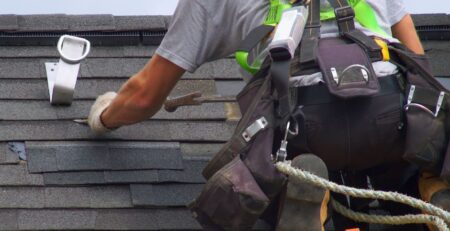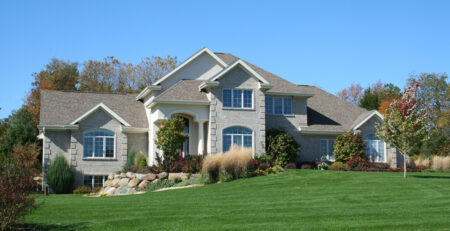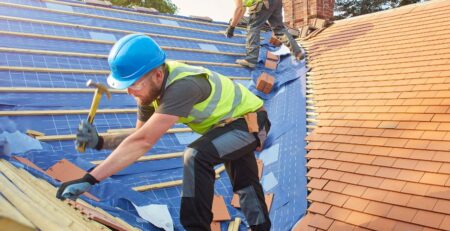Essential Roof Maintenance Tips For Homeowners
Regular roof inspections, ideally twice a year, are crucial for maintaining structural integrity and catching issues early—clear debris to prevent clogged gutters and water pooling, which can lead to leaks. Check for leaks regularly by looking for water stains and mold and inspect for damaged areas that may need immediate repair. Trim overhanging branches to prevent roof damage caused by scraping or falling branches. These essential maintenance tips guarantee your roof stays in top condition, preserving your home’s integrity and reducing costly repairs in the long run. Mastering these practices will help you safeguard your investment and ensure a secure shelter for your family. For expert advice and assistance, consult with our roofing specialists who can provide you thorough inspections and repairs.
Roof Inspection Schedule
Regular roof inspections are essential for preserving the structural integrity and extending the lifespan of your home’s roofing system. By scheduling these inspections, you can detect and resolve issues before they become expensive repairs or replacements. Having your roof inspected at least twice a year is advisable, preferably in the spring and fall. However, more frequent inspections may be necessary if your area experiences extreme weather conditions, such as heavy snowfall, strong winds, or hail.
During a roof inspection, a professional roofer assesses the roof’s overall condition, looking for signs of damage, leaks, or wear and tear. They also inspect the flashing, gutters, downspouts, and protrusions such as chimneys or vents. In addition to regular inspections, it is essential to have your roof checked after severe weather events to ensure no damage has occurred.
Clear Debris Regularly
To maintain the best condition of their roof and prevent potential damage, homeowners must regularly clear debris from the roof surface and gutters. Debris, such as leaves, twigs, branches, and dirt, can accumulate on the roof over time, leading to clogged drains and drainage systems. When gutters are blocked, water cannot flow properly, causing it to pool on the roof and potentially seep into the structure, resulting in leaks and water damage.
Clearing debris from the roof surface and gutters regularly helps guarantee that water can flow freely off the roof and away from the home. This simple maintenance task can prevent costly repairs and extend the lifespan of your roof. Clearing debris at least twice a year, in the spring and fall, or more frequently if you have overhanging trees that shed leaves regularly is recommended.
Investing time in clearing debris can save you money in the long run by avoiding water damage and preserving the integrity of your roof.
Check for Leaks
It is essential for homeowners to regularly inspect their roofs for leaks to identify and address potential water infiltration issues promptly. Start by examining your attic for any signs of water stains, mold, or dampness, as these can indicate a leak from the roof above. Check the ceilings and walls in your home for water spots or discoloration, as these are also signs of a leaky roof.
To further pinpoint the source of a leak, inspect the roof from the outside. Look for missing, damaged, or cracked shingles and any gaps or cracks in the roof flashing around vents, chimneys, and skylights. Pay attention to areas where different roof planes meet; these are common spots for leaks to develop. If you notice any issues, you must repair them promptly to prevent further water damage to your home.
Trim Overhanging Branches
When it comes to maintaining the integrity of your roof, an important step is trimming overhanging branches that can pose a risk to the structure and longevity of your home. If left unattended, overhanging branches can cause significant damage to your roof. Branches that touch or rub against the roof can scrape shingles, dislodge granules, and create entry points for water. Moreover, these branches can break off and fall onto the roof during storms or strong winds, causing punctures or more extensive damage.
Regularly inspect your property for trees with branches extending over your roof. Trim back these branches to a recommended distance of at least 10 feet from your roofline. Hiring a professional arborist or tree trimming service is advisable to ensure the job is done safely and correctly. By cutting branches, you protect your roof and reduce the risk of debris clogging gutters and downspouts, preventing potential water damage to your home’s foundation.









